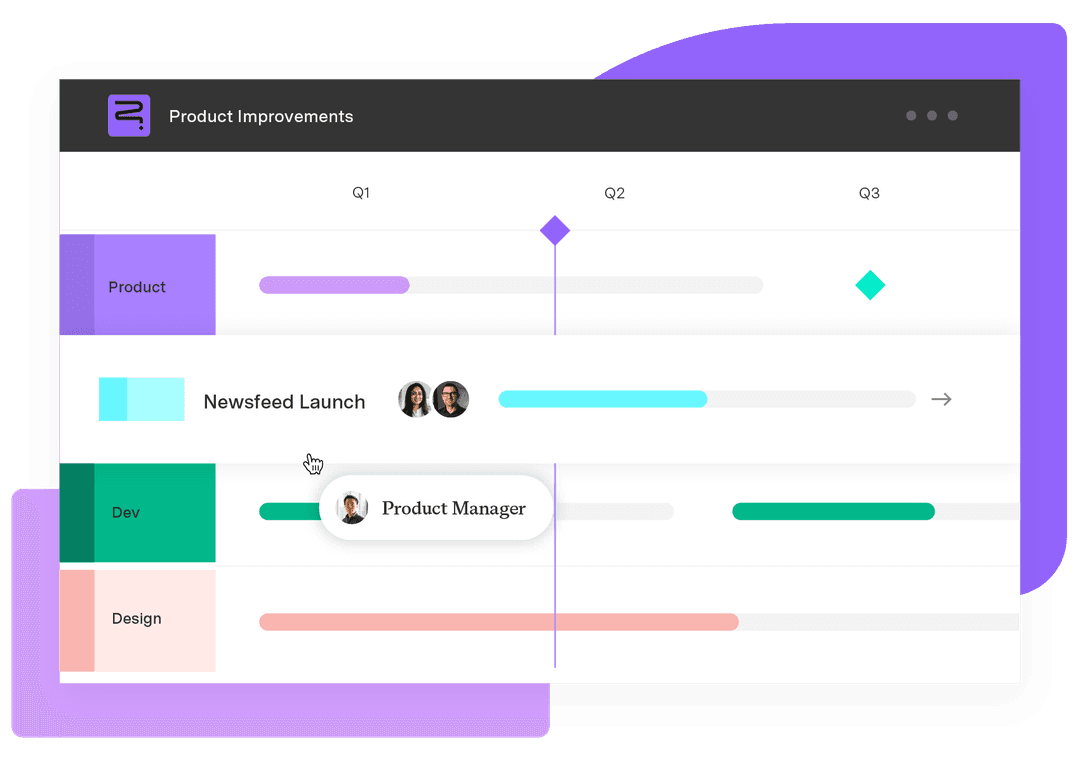How to create a project intake form process
Tempo Team
If only starting a project were as easy as hitting “send” on an outgoing email.
Instead, a project’s success often hinges on taking inventory of critical details like objectives, deadlines, resources, and approvals before the actual work begins. Or, in other words, how you manage the intake process.
To do this, many teams use a project intake form to list everything they might possibly need to get the job done – and done well.
Here, you’ll learn how to create an intake form tailored to your project’s unique specs. We’ll also share examples and a template to make the process easier.
What’s an intake form?
Whether it’s on paper or in a shared web doc, a project intake form is where you compile all the key details before any actual work begins. This form answers questions like:
Who’s the main point of contact?
What’s the target launch date and deadline?
What are the steps to getting there?
Are there any specific requirements or must-haves we need to remember?
Think of an intake form as your go-to space for outlining what it’ll take to not just get a project off the ground but to make it soar with flying colors. It’s your single source of truth that guides the project from start to finish, ensuring nothing important gets lost or overlooked along the way.
Once you’ve collected all the details on the intake form, you’re set to map out the project’s timeline confidently. By understanding objectives, deadlines, and resource needs up front, you’ll have clear priorities within the project and can allocate your resources – time, energy, and more – efficiently. Whether you’re a team of two, 20, or 200, your intake form keeps everyone focused on the right work at the right time instead of getting sidetracked or duplicating efforts.
Benefits of using a project intake form
Unorganized project kickoffs often end in unraveled messes. When the planning process happens via scattered Slack messages, informal hallway conversations, or vague email threads, things fall through the cracks. A standardized project intake form facilitates structure instead of chaos, and the results are noticeable almost immediately.
Gets everyone on the same page
A well-structured intake form establishes a single end goal for the whole team. It keeps everyone aligned on objectives, deadlines, and responsibilities – no one’s left wondering who’s in charge of what. This collective, concrete alignment at the start means less confusion down the line.
Speeds up the approval process
When you work with multiple teams or a formal project management office (PMO), approvals can drag on and on. But with an intake form that collects all the necessary details upfront, project leads have the context they need to say “yay,” “nay,” or “not now” without delays. Automated notifications, such as an email alert that instantly notifies the project manager when someone submits a new intake form, expedite the process even more.
Helps you know what to prioritize
Unexpected requests pop up along the way, but they’re not all urgent. A project intake form gives your team a clear metric for evaluating mid-project additions or detours against the priorities you set when you first created it.
Reduces miscommunication
Emails can be easy to misinterpret, and verbal requests sometimes go in one ear and right out the other. A well-documented intake process sets expectations early and curbs excessive back-and-forth. You’ll spend less time clarifying the scope and more time actually working on the project.
Optimizes resources
Knowing what’s coming down the pipeline – thanks to your intake form’s plan of attack – equips you to plan accordingly. A project intake form shows you what’s on the horizon so you can allocate time, people, and other resources where they’re most effective. Having all the project details in one place saves you from scrambling to shift duties on the fly or overloading already busy teams.
Saves everyone time
No two projects are the same, and that means no two intake forms should be, either. But by creating a general intake form template that’s easy to modify, your team won’t have to start from scratch every time a new project comes along. Even better, you can configure forms to pre-fill fields, add conditional logic, and automatically import directly into your project workflow once they’re completed. That means less admin work – and more time to dedicate to actually moving projects forward.
Intake form examples
Project teams often receive unexpected directives mid-project – some urgent, others vague, and some that start as quick questions but become week-long ordeals. Without a clear intake process, important details get lost in scattered emails or Slack threads, or they never make it past casual hallway conversations. A project intake form captures the essential information upfront so teams can move forward with confidence.
Here’s a look at how different teams might use a project intake form:
Marketing teams
Marketing teams take on all kinds of campaigns, from small social posts to big product launches. But no matter the scope, when details arrive in pieces – target audience, KPIs, and deadlines – it’s easy to miss the mark. A campaign intake form consolidates everything so the team can plan strategically and avoid constant follow-ups with the client.
Product development teams
Product teams pull ideas from sales calls, focus groups, and actual customer feedback. Without a structured intake process, they waste time sifting through duplicates and risk missing details that could make the biggest impact. A feature request intake form captures all the essentials so PMs can prioritize and plan based on real data, not guesswork.
IT teams
IT departments handle all types of service requests, from equipment setups to software upgrades. Without clear information – like who requested the project, when it’s due, or which department needs it – projects can stall, causing delays and frustration. A service request intake form gathers these essential details in one place, enabling IT teams to triage requests, allocate resources efficiently, and optimize everyone’s workload.
Freelancers
Even solo freelancers can benefit from project intake forms. Working with multiple clients simultaneously often means satisfying different needs and styles, and that makes it easy to mix up critical information like brand guidelines and approval contacts. A client intake form organizes everything in one place. It helps freelancers clarify expectations and minimize revisions, which ultimately keeps their roster of projects on track.
How to create a project intake form: A template
A well-designed intake form helps teams capture essential project details from the start – making it easier to plan, prioritize, and keep everyone aligned. Here’s an easily modifiable project intake form template to start you off:
Project overview
Field | Description |
Project title | |
Requester name | |
Department/team | |
Email/contact info | |
Submission date |
Project description
Field | Description |
Project summary (Briefly describe the project and its purpose.) | |
Business objective/goals (What problem does it solve? What’s the ideal outcome?) | |
Strategic alignment (Does it align with OKRs, business goals, or initiatives?) |
Audience and impact
Field | Description |
Target audience/customer segment | |
Expected impact/success metrics |
Timeline and deliverables
Field | Description |
Proposed start date | |
Desired launch/completion date | |
Key milestones | |
Deliverables required |
Budget and resources
Field | Description |
Estimated budget | |
Resources needed (design, dev, content, external vendors) | |
Tech/tool dependencies |
Risks and dependencies
Field | Description |
Known risks or constraints | |
Dependencies or cross-functional needs |
Approval workflow
Field | Description |
Approver name(s) | |
Department/role |
Additional info (Optional)
Field | Description |
Priority level (low, medium, high) | |
Project type (internal, client-facing, compliance, other) | |
Supporting files/URLs |
Streamline your project intake process with Tempo
Filling out an intake form is just the first step to ensuring a project’s success. What happens next can either boost your team’s momentum – or bury your project in the backlog.
Tempo turns scattered project intake requests into clear, trackable workflows. Tempo’s Idea Manager makes it easy to collect proposals in one place, score them against strategic priorities, and fast-track the ideas that matter most. And once your projects get the green light, Tempo’s Strategic Roadmaps helps you bring them to life with interactive timelines as well as resource management and collaboration tools.
Simplify your project intake process and transform your best ideas into fine-tuned actionable plans. Try Tempo today.












































